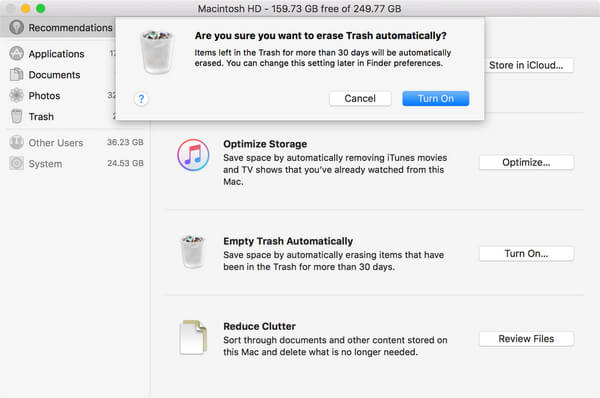

I can unsubscribe at any time by changing my email preferences, emailing or writing to Electronic Arts Inc., ATTN: Email Opt-Out, 209 Redwood Shores Pkwy, Redwood City, CA, 94065, USA.
#Mac system storage 77gb free#
You can watch your System Information graphic free up disk space in real time to see if you've removed enough.Yes! Send me EA news, products, events and promotions by email consistent with EA’s Privacy & Cookie Policy. Repeat for as many snapshot dates as required. This will be in the form of xxx-yy-zz-abcdef. Back at the terminal, type tmutil deletelocalsnapshots where will be one of the dates from your backup.Once my "System" disk usage is at an acceptable level, I stop deleting but you can delete all of them if you want to reclaim all of the disk space. Next you can remove the snapshots based on their date. Here, you'll now see a list of all of the locally stored Time Machine backup snapshots stored on your disk. At the terminal type tmutil listlocalsnapshotdates.If you need such redundancy or are worried about the recovery of your data then you would be best served to let macOS determine when to purge these files. Please note that although this doesn't affect your remote backup from Time Machine, this will get rid of the redundancy (at least until the next Time Machine backup) that a local backup disk will provide. If you have other categories that have very high disk usage you can click the manage button to get more details on what is using that disk space and possibly delete those things that you determine to no longer have use for. Although I understand the reasoning behind why Time Machine is storing local backups, I didn't feel that I needed so much of my disk space devoted to these local backup snapshots. In my case, "System" (meaning the operating system) was clearly using the most space. You'll be greeted with a color-coded categorization of what your disk is being used for. To see if this method will help you reclaim some disk space we need to check the macOS System Information.Ĭlick the Storage tab. Determining if you have a large amount of "System" disk usage And instead of waiting for macOS to catch up with my disk space requirements, I can force the purging from the terminal. However, sometimes the purging doesn't happen to leave enough disk storage for my very large video files and I'll get a "not enough disk space" message. It also purges local backups if disk space starts to get too low. In fact, macOS High Sierra manages this disk usage seamlessly without user intervention. The reasoning behind this is that in the event the remote backup disk is not available or present, then you can recover files in spite of a missing remote backup disk and recover from the local disk. If you run Time Machine for backups over Wi-Fi like I do, then macOS High Sierra will simultaneous use your remote backup disk and your local disk to save backups to.

#Mac system storage 77gb how to#
How to determine if a lot of your disk space is being used by "System".But now we'll show you how to reclaim some of your disk space from your "System" disk usage. We have spoken about how to rid your computer from data noted in "other" which in short is space taken up by caches, plug-ins, and documents. Going to the macOS storage analyzer can be a mixed bag of easy to understand actions to reduce disk usage to cryptic descriptions that are more daunting to deal with. Having to play around with large video files can be a headache when my system has a blazingly fast SSD drive but is only 500GB in size.


 0 kommentar(er)
0 kommentar(er)
